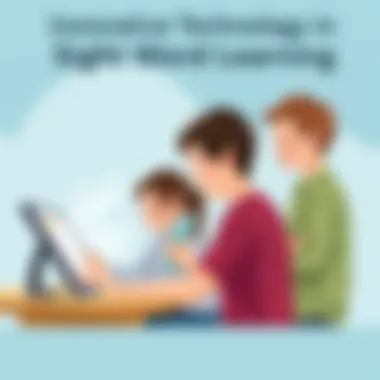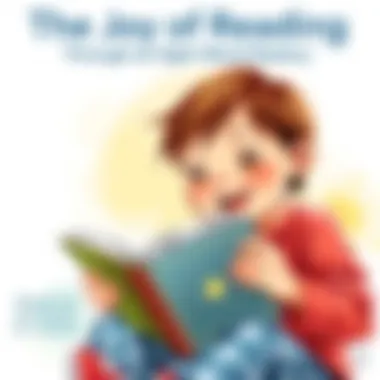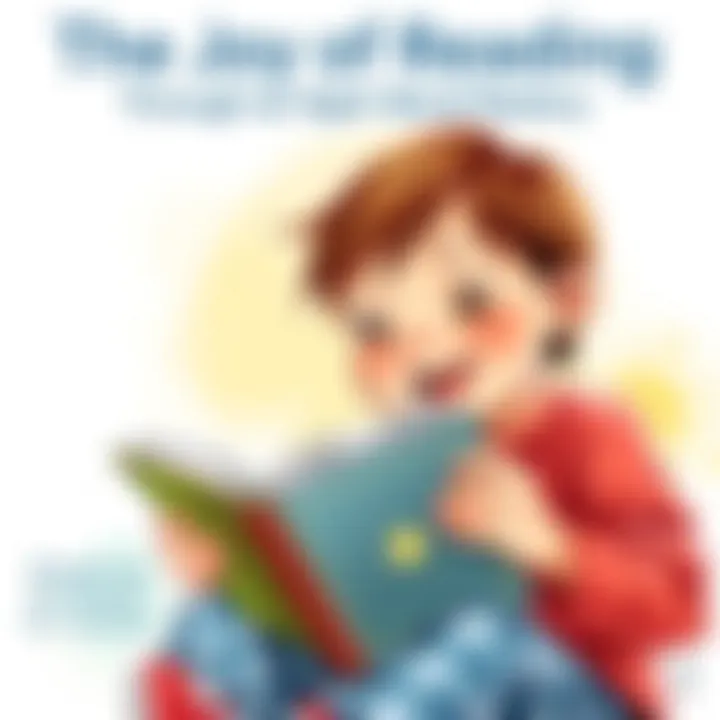Mastering Sight Words: Essential Strategies for Success


Intro
In the realm of early literacy, sight words often stand as the cornerstone for building strong reading skills. Sight words, or high-frequency words, are those words that children encounter frequently in their reading materials but may not easily sound out. Mastering these words is crucial; it enables kids to recognize them instantly, fostering a smooth and fluent reading experience. But the journey to mastering sight words is not merely about rote memorization. It involves creative teaching methods, engaging activities, and a supportive environment that encourages exploration and learning.
As parents, educators, and caregivers, understanding the essence of sight words will assist in nurturing a child’s reading journey. This guide will explore several strategies and tools that leverage technology and interactive play, ultimately enhancing the learning experience while boosting confidence in young readers. From interactive learning games to creative DIY projects, effective techniques await us in this comprehensive exploration of sight word mastery. Let's delve into this exciting landscape!
Understanding Sight Words
Understanding sight words is fundamental in this comprehensive guide, as it lays the groundwork for grasping how these words function in enhancing reading skills. For young learners, recognizing sight words can be like finding the north star on a cloudy night. It serves as a reliable point of reference, guiding them through the vast landscape of written language. Sight words are commonly used words that children are encouraged to recognize instantly without having to sound them out. This recognition frees up cognitive resources, allowing for a smoother reading experience.
In this age of information overload, it's crucial to prioritize early literacy skills. Sight words not only contribute to fluent reading but also bolster overall confidence in young learners. By mastering these words, children feel empowered to explore stories and texts independently. This independence ignites a passion for reading, which can foster a lifelong love of literature.
Definition of Sight Words
Sight words are, essentially, the building blocks of literacy. They often account for a significant portion of the texts children encounter daily. Words like "the," "and," and "is" are prime examples of sight words. They are typically small and frequently used, yet their importance cannot be overstated. Commonly referred to as high-frequency words, sight words are words that children are taught to recognize by sight rather than decode. This approach helps them to read with greater fluency, which is key in building comprehension skills.
The concept of sight words emerged as a teaching method part of various literacy programs. Understanding this definition is essential for parents and educators alike. It informs them about what to focus on during learning sessions and how to share these words in a way that engages children.
Importance of Sight Words in Literacy
The significance of sight words in literacy cannot be overstated, as they form a large part of what readers encounter in texts. According to educational research, up to 75% of the words in early reader books are sight words. This means that a child’s ability to recognize these words quickly can lead to improved reading skills.
Moreover, sight words serve multiple purposes that extend beyond mere recognition. They help children:
- Develop fluency, enabling them to read smoothly and with proper phrasing.
- Improve comprehension, as recognizing these words allows students to focus on understanding what they read instead of laboring over each word.
- Enhance confidence in reading abilities, fostering a more positive learning environment.
Emphasizing sight words can significantly influence a child’s literacy journey, making it an essential focus in education.
Developmental Milestones Related to Sight Words
As children progress in their reading journey, there are several developmental milestones they typically achieve concerning sight words. Understanding these milestones helps parents and educators know what to expect and when to intervene if necessary.
- Early Recognition: By age four to five, many children begin to recognize a few sight words in isolation. These initial readings set the stage for further development.
- Contextual Usage: As they approach kindergarten, children are expected to recognize and use sight words within simple sentences. At this stage, they connect words to meanings, forming their linguistic understanding.
- Fluent Reading: By first or second grade, children should be able to read a list of common sight words independently and fluently, marking a significant achievement in their reading development.
These milestones can vary from child to child, but keeping track of progress in sight word recognition is vital. It indicates a child’s growing proficiency in reading, which creates a stronger foundation for future learning.
Teaching Approaches for Sight Words
Teaching sight words effectively requires methods that resonate with young learners. Each approach plays a significant role in literature acquisition, tapping into the diverse ways children process information. Understanding the nuances between various methods can equip parents and educators with the right tools to promote literacy confidently.
Phonics vs. Whole Language Approaches
Phonics and whole language represent two corners of the educational spectrum in reading. Phonics focuses on the relationship between sounds and letters, stressing decoding skills. It's about teaching children the code—how to sound out words based on their spelling. This method can work wonders for learners who thrive on structure.
On the flip side, the whole language approach emphasizes meaning and context. It encourages children to understand words as integral parts of a whole narrative. This approach can foster a love for reading, allowing kids to become more acquainted with the rhythm and flow of language. Each method has its merits and drawbacks, and the choice primarily hinges on the child's learning style. Balancing both methods may yield the best results for mastering sight words, as it combines sound understanding with contextual learning.
Contextual Learning and Its Benefits
Contextual learning centers on embedding words within relatable scenarios. This method captures the attention of young readers and offers engaging pathways to comprehension.
Using Words in Sentences
Using words in sentences highlights the practical application of sight words, showcasing how they fit within everyday contexts. It allows children to see words in action, reinforcing their role beyond rote memorization. For instance, consider the sight word "the"—its inclusion in a meaningful sentence like "The cat sat on the mat" breathes life into a seemingly simple word.
This method is particularly beneficial, as it promotes deeper understanding and retention. By contextualizing sight words, learners are less like to forget as they associate them with imagery and real-world experiences. However, it requires continuous practice to ensure that learners genuinely grasp the meaning, leading to potential challenges if not conducted thoughtfully.


Creating Story Contexts
Creating story contexts, similarly, roots sight words within narratives. Crafting stories incorporating sight words can effectively make learning relevant and amusing. An instruction routine may involve, for instance, asking children to generate short stories comprising their sight words. This is immensely beneficial because young readers engage their imaginations, experiencing words in a narrative form that aids in retention.
A unique feature of this method is that it cultivates creativity while enhancing literacy skills. However, excessive abstraction could lead to confusion for some learners, so careful structuring is essential to maximize its effectiveness. Thus, while empowering, educators must strike a balance between structure and storytelling flexibility to ensure sight word mastery.
Direct Instruction Techniques
Direct instruction techniques provide straightforward, clear, and structured methods for teaching sight words. These highly structured approaches lend themselves well to measurable outcomes and allow educators to gauge student progress.
Flashcards and Repetition
Flashcards and repetition represent a straightforward but powerful technique. By showcasing sight words on flashcards, educators can facilitate quick recall through regular practice. The repetitive nature of this method embeds these words deeply into memory, applying cognitive science principles effectively. Kids can visualize and almost internalize words through repetitive exposure kicked up with varied activities.
However, while flashcards are effective, there exists a risk of turning learning into a mundane task if not balanced with other methods. Staying mindful of engagement ways is crucial to keep children interested in the repetition.
Interactive Games
Incorporating interactive games in the teaching of sight words introduces an element of fun that can transform the learning experience. Games such as word bingo or scavenger hunts encourage active participation, making learning light and enjoyable. This approach is highly beneficial as it allows students to practice sight words in an engaging context, boosting retention rates significantly.
The key characteristic of interactive games is their ability to combine play with learning. This interactivity fosters collaboration and communication among learners, further enriching their reading development. However, careful selection of games is pivotal; overly complex games can divert focus from the actual learning objective and add unnecessary confusion.
By applying these varied teaching approaches, educators and parents can create a rich, diverse literacy experience that caters to different learning styles, ensuring that sight word mastery is both effective and enjoyable.
Effective Strategies for Learning Sight Words
To effectively teach children sight words, having a multitude of strategies is essential. This section will focus on various approaches to reinforce sight word learning, which, as highlighted previously, is fundamental to literacy development. Here, we explore some effective strategies to engage children actively while encouraging retention and mastery of these key words. Learning sight words isn't just about rote memorization; it is about creating pathways for children to become confident readers.
Incorporating Visual Aids
Visual aids serve as an essential tool in the learning process, particularly for children, who often respond well to colorful and engaging images. Incorporating these aids can significantly enhance understanding and memory recall of sight words.
Posters and Charts
Posters and charts are a staple in many classrooms and homes. These tools effectively display sight words in large, bright fonts along with associated images. The key characteristic of using posters and charts is their prominence. When hung up around a child's learning environment, they become a constant visual reminder of words that need to be recognized.
"Visual learning supports memory retention, making words more recognizable over time."
One unique feature of posters and charts is their ability to present multiple words and concepts at once, allowing for easy comparison and association. The advantage of this method is that it offers a low-cost, high-impact solution for parents and educators. However, the disadvantage might be oversaturation; if there are too many words displayed, it could overwhelm the child, reducing the effectiveness of this strategy.
Digital Resources
In the digital age, resources such as educational apps and websites have become valuable in teaching sight words. Digital tools include interactive games and flashcards that keep children engaged. The fundamental advantage of digital resources is their interactive nature. They provide feedback in real time, allowing children to correct mistakes immediately.
Their innovative design, often featuring engaging graphics and sounds, makes learning more enjoyable compared to traditional methods. A notable feature of these resources is their ability to adapt to a child's skill level, providing tailored learning experiences. However, the disadvantage is the potential for distraction; the vast array of activities can sometimes lead children away from focusing purely on sight word recognition.
Promoting Active Engagement
Merely introducing sight words isn’t enough; children must interact with these words actively to truly grasp them, which significantly boosts their learning process. Active engagement allows children to make connections in a fun and dynamic way.
Word Hunts
Word hunts are an engaging way to promote active participation. In this activity, children search for sight words in various contexts, be it in books, labels in the house, or during outdoor activities. The key characteristic of word hunts is their exploratory nature. By turning learning into a game, children are more likely to perceive learning as an enjoyable activity.
The uniqueness of this strategy lies in its versatility; it can be adapted for different environments and age groups. While the advantages include fostering an exciting atmosphere for learning, the disadvantage could be logistical; finding a conducive place for a word hunt may not always be feasible.
Writing Exercises


Writing exercises help solidify children’s understanding by allowing them to use sight words in context. Through tasks such as sentence formation or creative storytelling, children engage with the words more than through passive learning. The key aspect of writing exercises is that they cater to various learning styles. Children can express their creativity while practicing the proper usage and context of sight words.
One standout feature is that these exercises can easily be customized to include personal experiences or interests, making them relatable. Yet, it’s important to be aware that without adequate guidance, some children may face challenges in their sentence structuring or spelling, potentially leading to confusion.
Utilizing Repetition and Review
Repetition is a vital factor in learning, especially for sight words. Regular practice and review make these words second nature to children.
Daily Practice Routines
Establishing daily practice routines creates consistency in learning sight words. These sessions can be short yet focused, allowing children’s minds to absorb the material. The key characteristic of daily practice is its routine nature—like brushing teeth, it becomes an ingrained habit over time.
A unique aspect of daily practice is that it can incorporate fun activities, such as singing or rhythm games, to reinforce learning. The advantage here is the establishment of a habit and an easy way to incorporate learning into daily life. Nevertheless, without variation, daily routines can become monotonous, potentially leading to disengagement.
Progress Tracking
Keeping track of progress helps both parents and children understand how far they've come with their learning. Utilizing charts or apps to record the number of sight words mastered can provide motivation. The key characteristic of progress tracking is its ability to visually reflect achievement, which can boost children's self-esteem.
A unique feature of progress tracking is that it gives children tangible proof of their advancements, motivating them to keep going. However, a possible disadvantage is that focusing too much on tracking might create pressure, making the learning experience more stressful rather than enjoyable.
These strategies collectively intertwine to offer a comprehensive method for mastering sight words, leading to stronger reading foundations for children.
Technology's Role in Teaching Sight Words
In our increasingly digital world, the integration of technology into education has become paramount, particularly in the realm of literacy. The focus on sight words, crucial for early reading development, benefits greatly from the use of technological tools. By harnessing apps, online resources, and interactive platforms, educators and parents can create engaging environments that enhance learning outcomes. The blend of technology with traditional teaching methods allows children to explore sight words in a manner that aligns with their interests and learning styles.
Apps and Educational Games
The popularity of mobile devices among children makes educational apps one of the most effective means of teaching sight words. These apps often feature lively graphics, sound effects, and interactive elements that capture young learners' attention. Examples include Starfall and Sight Words by Teachers Pay Teachers. Both apps are designed to help children learn sight words through fun, engaging games.
Using these platforms not only makes the learning process enjoyable but also allows for personalized learning experiences. Apps can track the child’s progress, offering tailored challenges that reflect their abilities, which facilitates both engagement and retention. Furthermore, many smartphones and tablets come equipped with speech recognition capabilities, allowing kids to practice pronunciation and receive immediate feedback. This responsive technology supports a dynamic learning journey that paper-based learning often cannot achieve.
Online Resources and Tutorials
The internet is replete with valuable resources for parents and educators seeking to teach sight words effectively. Websites like Scholastic and Epic! provide a plethora of free printable worksheets, videos, and games that align with sight word learning objectives. Additionally, YouTube hosts many educational channels that offer tutorials and strategies to engage children with sight words.
For instance, channels may showcase interactive read-aloud sessions, where sight words are emphasized in a narrative context. This kind of exposure can enhance contextual understanding, making it easier for children to recognize and remember sight words within sentences. Tutorials can also offer insights on how to incorporate sight words into daily activities, ensuring that learning transcends the traditional classroom environment.
Integrating Technology in Classroom Settings
To maximize the impact of technological tools, educators should think strategically about how to integrate these resources into their classroom routines. One effective approach is through blended learning, where technology complements traditional teaching methods. For example, teachers might introduce sight words through interactive whiteboards, using engaging videos to demonstrate usage in context.
Group activities involving tablets and apps can promote collaboration and peer learning. Consider setting up word stations, where small groups explore different sight word games on various devices. This not only reinforces learning but also fosters camaraderie and teamwork among students.
It's also crucial for teachers to remain mindful of potential challenges. Not all students may have equal access to technology, so providing equitable resources is key. Offering alternatives or pairing students with differing access levels can foster inclusivity in learning.
The Psychological Impact of Sight Word Mastery
The realm of reading is not simply built on the knowledge of letters and sounds but is deeply interwoven with a child's confidence and overall academic trajectory. Mastering sight words isn’t just about recognizing them on a page; it's a milestone that shapes a child’s cognitive landscape and emotional wellbeing. When they start to string together these common words effortlessly, it goes beyond mere reading—it's a boost to their self-esteem and a springboard into all other forms of learning.
Enhancing Reading Confidence
A child’s confidence in reading can plummet if they struggle with fundamental skills like sight word recognition. As they master sight words, which often make up a significant portion of early texts, they experience a newfound sense of achievement. This sense of success not only encourages them to tackle more complex texts but creates a more positive relationship with reading. Imagine a child proudly announcing, "I can read that book all by myself!" instead of shying away or feeling frustrated. When sight words become familiar territory, the child feels empowered to dive deeper into literature, fostering a habit of independent reading that can last a lifetime.
Effects on Overall Academic Performance
In the broad spectrum of academic success, reading competence stands tall as a keystone. Children who grasp sight words early tend to perform better across various subjects. Math, for example, often includes reading comprehension elements—understanding word problems, instructions, or textbooks. When a child is confident in reading, they are more likely to engage actively in all learning contexts. Research indicates a strong correlation between vocabulary acquisition through sight words and overall literacy skills, illustrating how the beginning of reading fluency can significantly impact performance across educational domains.


Addressing Learning Difficulties
Dyslexia and Sight Words
For children with dyslexia, sight words can represent both a challenge and a breakthrough. Recognizing these crucial words can often come easier than tackling phonetically irregular spellings. Teaching sight words through repetition and visual recognition offers a unique advantage for these learners. Incorporating multisensory approaches—like using colored markers or highlighting words—can engage them more deeply and make learning these words a bit less daunting. The immediacy of recognition can help build a foundational confidence that often seems elusive, paving the way for better phonetic decoding later. Yet, while this approach is promising, it's essential to recognize that not all children with dyslexia will thrive in the same manner. Thus, offering varied methods is important.
Tailoring Approaches to Individual Needs
Understanding that every child is different, especially those facing challenges, is critical. Tailoring approaches for sight word mastery means adapting teaching styles and materials to fit each child's unique learning profile. Some might benefit from auditory reinforcement, while others may require visual aids or kinesthetic activities. A mix of strategies can cater to varying learning paces and preferences, providing a more inclusive and effective pathway to mastery. These personalized strategies can alleviate frustration and bolster persistence—two invaluable traits in lifelong learning. Ultimately, customizing the learning process can not only help learners grasp sight words more efficiently but also nurture a love for reading that lasts long beyond early education.
Learning to read isn't merely about deciphering letters; it's about building a bridge to confidence, curiosity, and creativity.
By understanding the psychological nuances tied to sight word mastery, we can appreciate that teaching these words isn't just an academic endeavor, but a crucial part of a child's broader emotional and intellectual growth. Supporting children in mastering sight words is equipping them with tools to thrive in every aspect of their academic and personal lives.
Resources for Parents and Educators
Understanding how to effectively teach sight words is critical for both parents and educators. These resources not only furnish valuable information but also help enrich the learning experience for children. Having access to diverse materials means both children and caretakers can adapt to what works best in their unique settings. This section will explore various resources that can aid in the mastery of sight words, ensuring a well-rounded approach to literacy development.
Books and Guides on Sight Words
Books are an evergreen source of connection and learning. They can provide strategies backed by research and practical tips that educators and parents can employ.
- Guidance and Techniques: Titles specifically focused on sight words often contain age-appropriate exercises and methods that simplify the teaching process. For example, "The Reading Teacher's Book of Lists" provides concrete lists of sight words along with suggestions for teaching them effectively.
- Inspiration for Learning: Other enlightening resources may include "Sight Words Flash Cards" from popular educational publishers. These serve not just as tools for practice but can spark creativity in how to integrate sight word learning into daily life. Consider using these cards during family game nights or as part of a fun morning routine.
- Tailored Guides: It is crucial to find literature tailored to specific age groups or learning styles. Resources that focus on understanding the individual child's needs can make a huge difference in how sight words are learned.
Printable Worksheets and Activities
Worksheets offer a structured yet flexible approach to mastering sight words. Unique activities can cater to various learning preferences, making learning enjoyable and less of a chore.
- Diverse Formats: From word searches to fill-in-the-blanks and matching exercises, worksheets address different aspects of learning. They can be printed for daily practice and offer visual reinforcement. Websites like Education.com often have free downloadable worksheets that parents can customize based on their child's skill level.
- Hands-On Activities: Incorporating physical movement into learning can boost memory. For instance, a worksheet may instruct children to find certain sight words scattered around a room, turning practice into an exciting treasure hunt.
- Challenging Exercises: It can also be beneficial to create worksheets that involve forming sentences with the sight words learned. This not only strengthens recognition but also encourages children to apply their knowledge practically.
Community and Online Support Groups
The journey towards mastering sight words doesn't have to be walked alone; engaging with a community can provide support, resources, and camaraderie.
- Forums and Discussion Groups: Platforms like Reddit host active discussions involving parents and educators sharing their experiences with sight word teaching. Subreddits such as r/Parenting and r/Teachers provide a wealth of advice and discussions that can illuminate useful techniques.
- Social Media Groups: Facebook holds several groups dedicated to early literacy where resources and experiences can be shared. Joining those can offer fresh perspectives and new resources that individuals might not have encountered on their own.
- Local Support: Consider reaching out to local libraries and schools, which often have workshops or parent nights that focus on literacy. Connections made in these settings can link parents and educators with experienced professionals who can offer specific insights tailored to various learning scenarios.
Engaging with a community of parents and educators allows you to share resources and gain inspiration, making the journey toward mastering sight words more pleasant.
The combination of books, worksheets, and community support creates a strong foundation for helping children learn sight words. As parents and educators navigate this journey together, their combined efforts lay the groundwork for lifelong literacy.
Culmination
The conclusion serves as the pivotal point of this article, wrapping up the extensive discussions around sight words and their vital role in early literacy. By understanding how sight words function and their significance in enriching a child's reading skills, parents and educators can cultivate a supportive learning environment. This conclusion isn't merely a summary but rather an invitation to leverage the insights gained.
Recap of Key Takeaways
To provide clarity, several fundamental points emerge that are crucial for promoting sight word learning:
- Recognition of Importance: Sight words are foundational for fluent reading and comprehension. Without a solid grasp of these words, a child's reading journey can become significantly hindered.
- Diverse Teaching Strategies: Various instructional methods, including phonetic routines, contextual learning, and technology-driven resources, can be tailored to suit different learning styles.
- Psychological Impact: Mastering sight words instills confidence in young readers, leading to better overall academic performance. Students often feel empowered when they can recognize words easily, which motivates them to read more.
- Parent and Educator Roles: Both parties play a vital role, and resources abound to assist in teaching sight words effectively, from books to digital tools. Engaging with children in this process can greatly enhance their learning experience.
Sharpening these key messages allows not only for a deeper understanding of sight words but also stimulates ongoing discussions about literacy education.
Future Directions in Sight Word Education
As we look ahead, several exciting trends and opportunities lie in the pathway of sight word education:
- Increased Integration of Technology: With the rapid advancement of technology, it is paramount to integrate new digital learning tools into sight word teaching. For instance, virtual reality could one day offer immersive reading experiences that make learning sight words more engaging.
- Personalized Learning Paths: Focus on individualized education plans will gain more traction, allowing tailored teaching methods for children with unique learning needs, particularly those diagnosed with dyslexia or other learning difficulties.
- Collaboration Across Disciplines: Future programs might incorporate insights from psychology and educational neuroscience, leading to more effective teaching techniques that stem from an understanding of how children learn.
Incorporating these future directions will offer immense benefits, ensuring that children not only learn sight words but also embrace a love for reading that can last a lifetime. Encouraging exploration and adaptation will pave the way for even greater successes in literacy education.
"Education is the most powerful weapon which you can use to change the world." - Nelson Mandela
For more insights and resources, consider exploring sites like Scholastic and Reading Rockets, which offer extensive information on sight words and literacy development.















